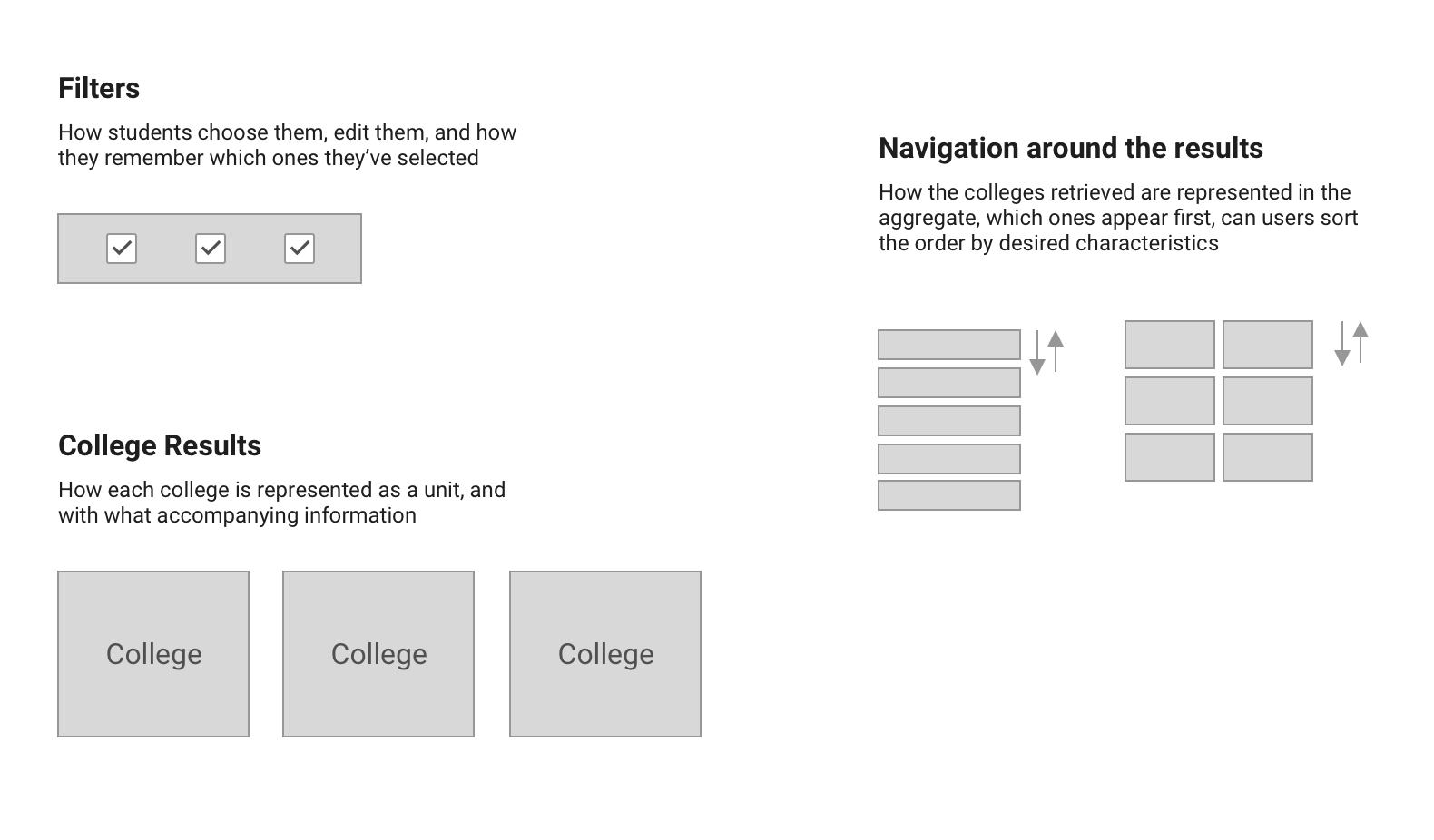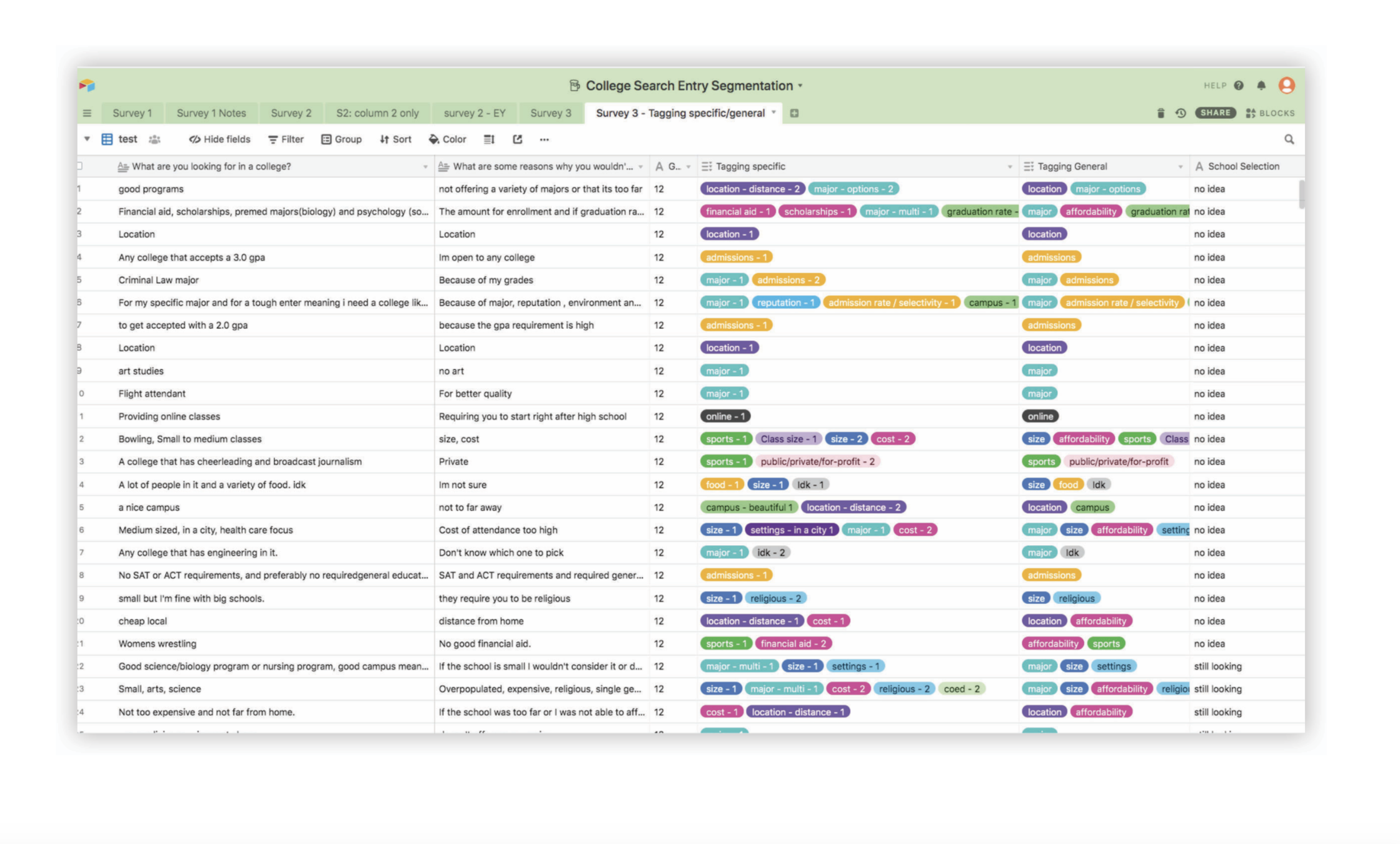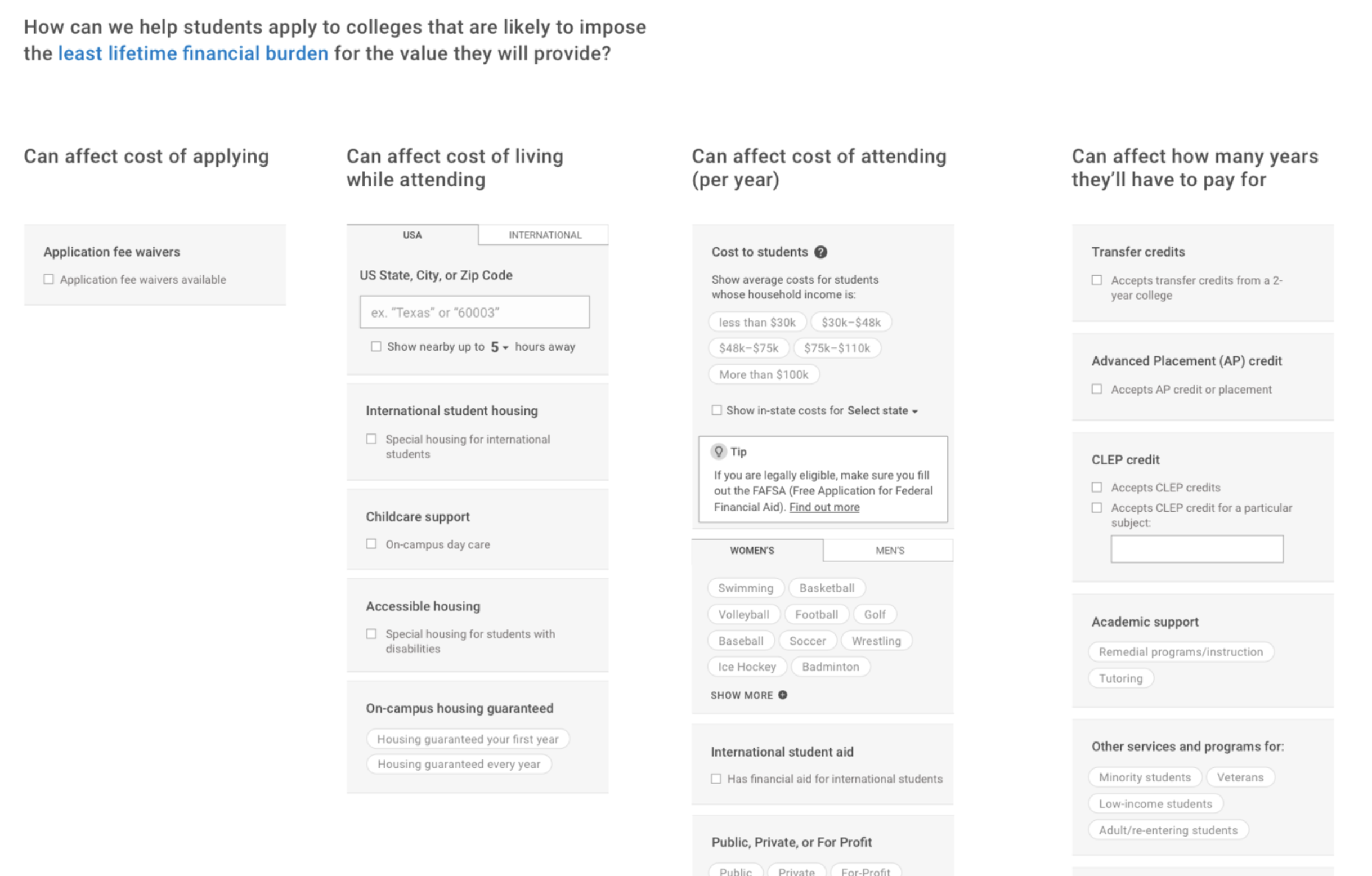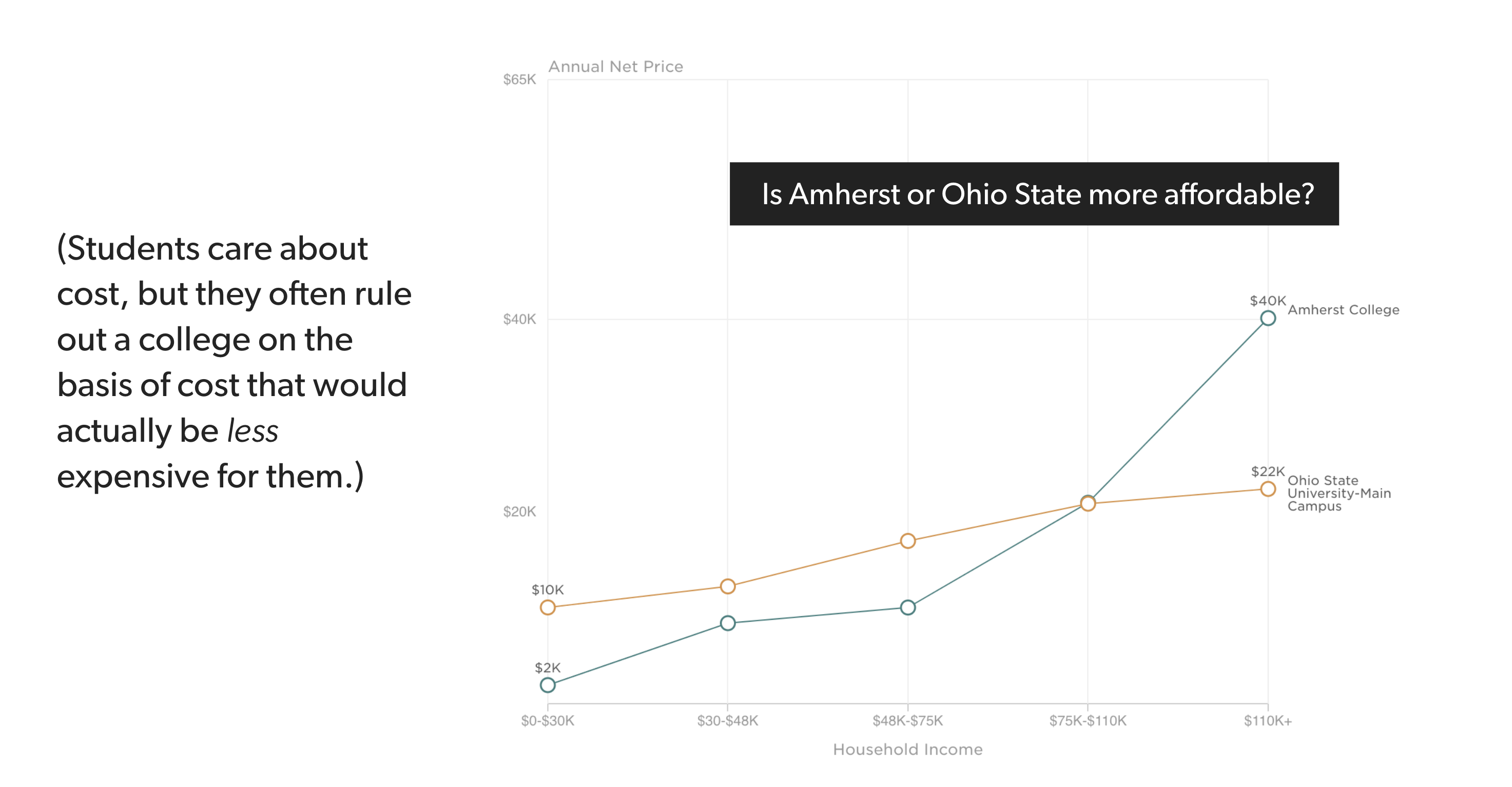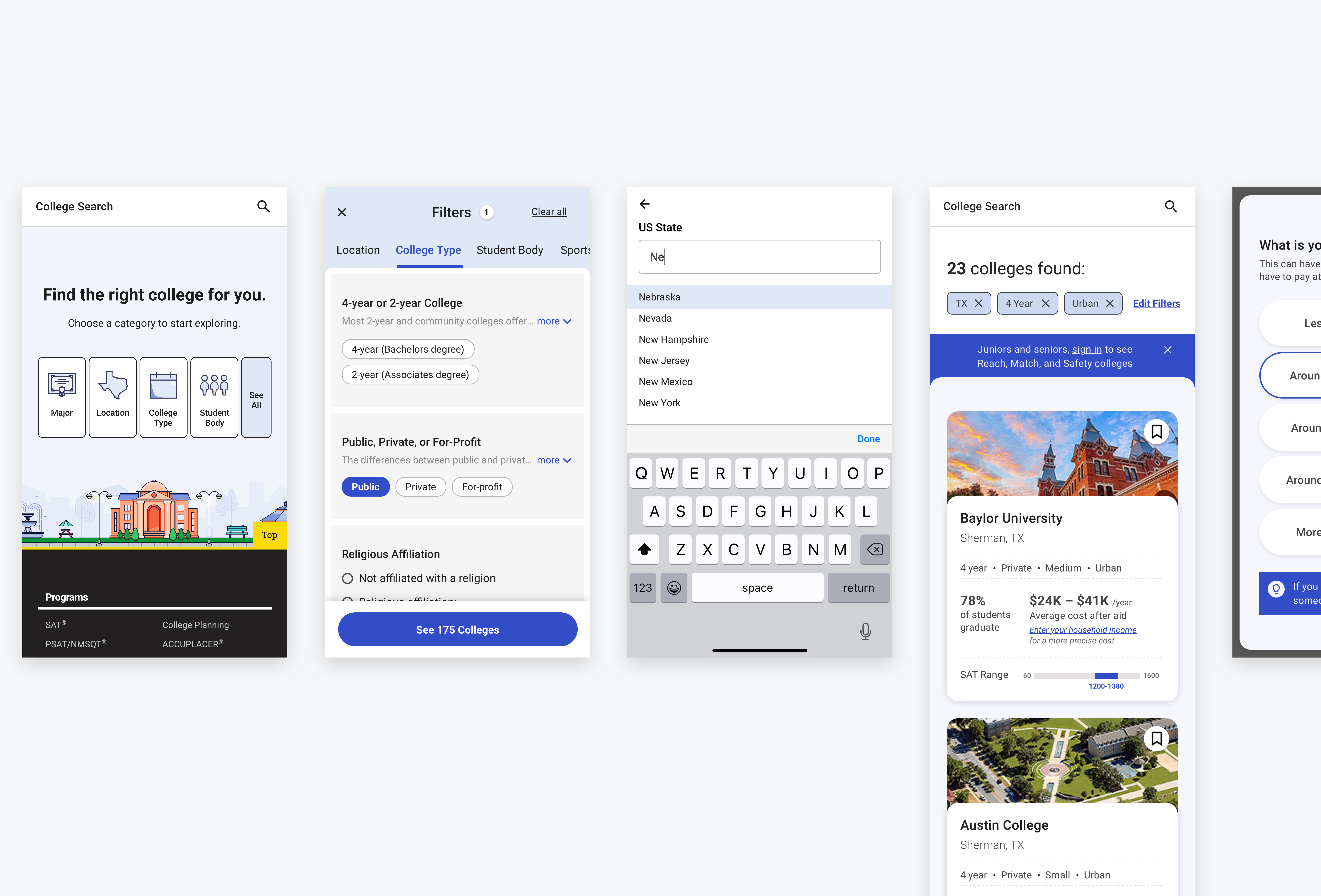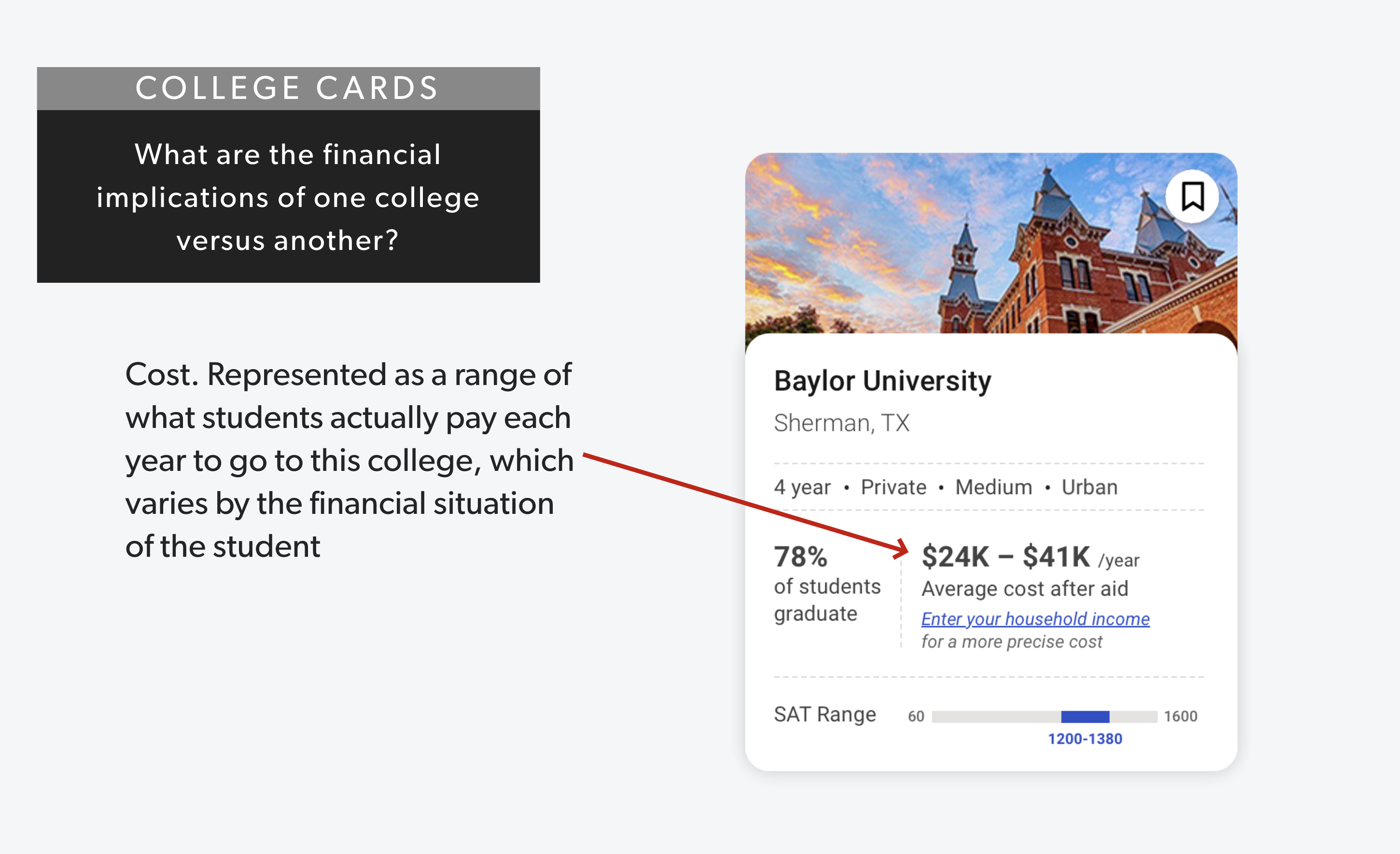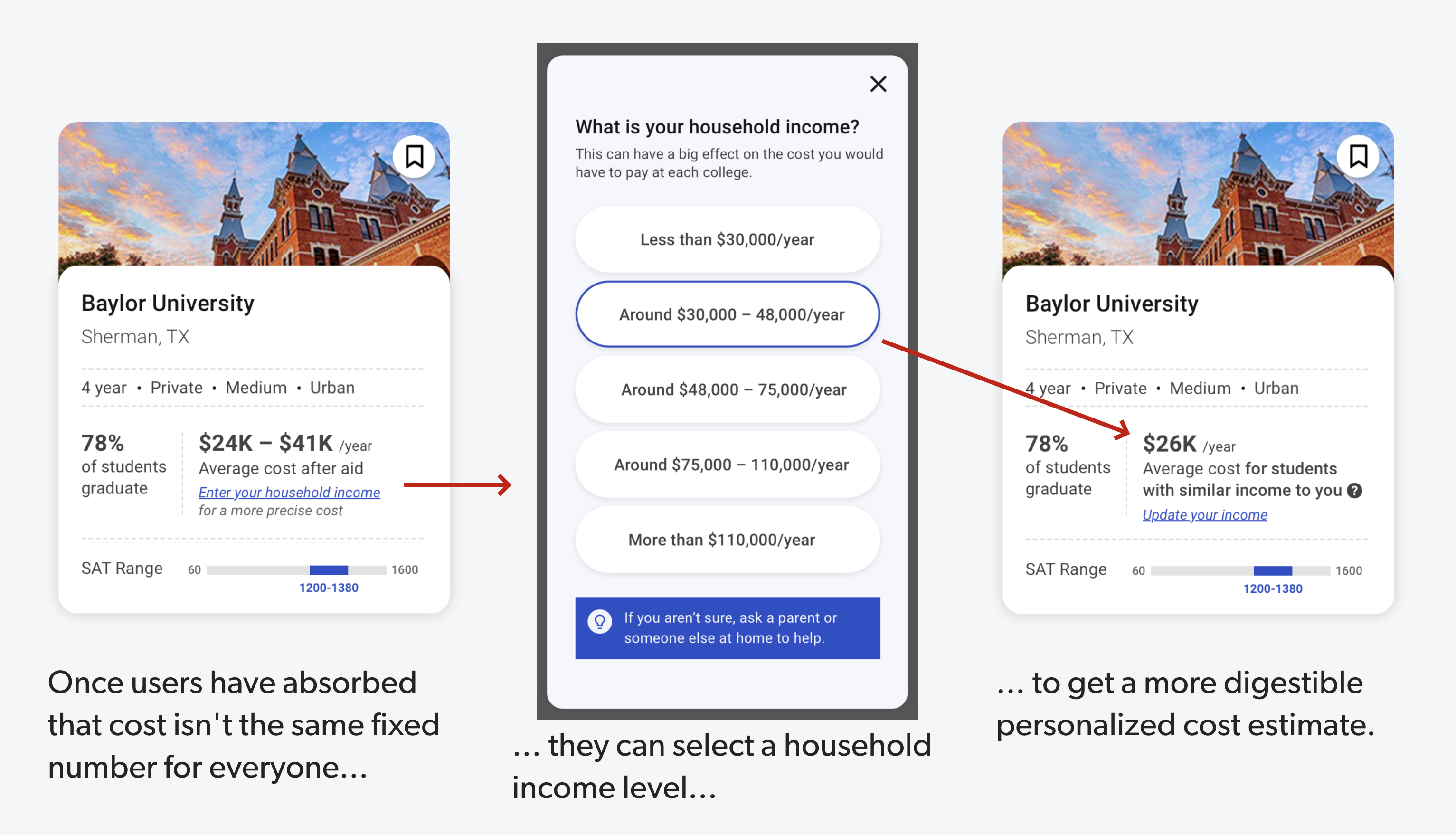The Product
In the context of a website used by millions of US high school students to decide where to apply to college, my small team and I designed a complete overhaul of the existing tool to help students’ expand their horizons and improve their chances of attending a college that will allow them to pursue their goals, have a rewarding, formative experience, and avoid risking their long-term financial security.
On my team, we aim to optimize the experiences we design particularly for low-income students, students of color, rural students, and students whose families, communities, and support systems have less familiarity with norms around American higher education—the ways colleges differ from one another, the structure of payment, the risk of debt, and the assessment of value for money, among other factors.
My Role: UX Design
As a product designer on the College and Career Access team at College Board, my work is focused on building and improving the usability of online tools and resources that can help students make more informed decisions as they approach the transition from high school to college. How to improve their odds of getting in, how to apply, how to determine colleges that would be a good fit, how to get financial assistance, how to compare their options, what to expect when they get there, and more.
Through identifying clear principles and goals, and conducting research to better understand the needs and behavior of a wide variety of students coming from different backgrounds, levels of information, preferences, and aspirations, we designed a low-stress experience that makes it easy for students with different needs to discover, explore, and keep track of colleges with traits that are personally important to them, and to compare those colleges based on metrics related to education quality and financial risk.
